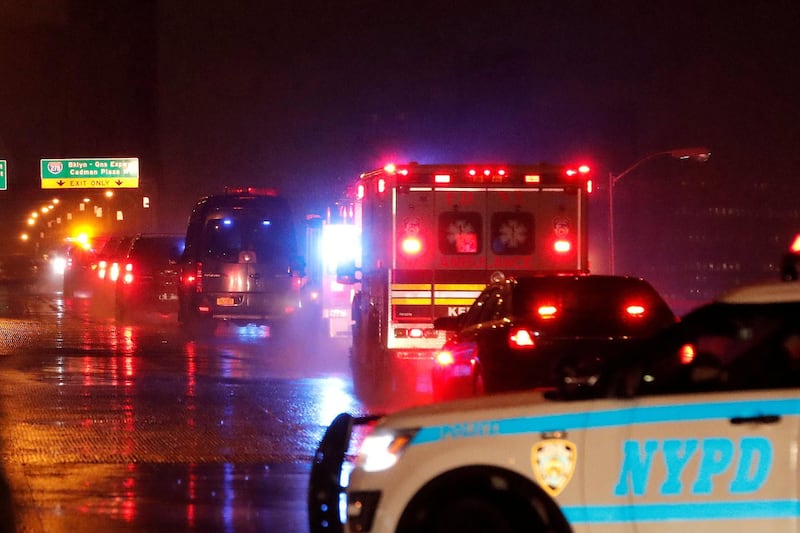Christian Rodriguez dropped out of college in Colombia to follow his dream of starting up an Internet security company.
At the age of 21 he was offered the deal of a lifetime but it meant flying to a secret mountain airstrip where he was met by armed guards and a growing sense of fear.
After a drive to a hidden camp he was introduced to his new client.
“It was Chapo Guzman,” said Mr Rodriguez in a Brooklyn courtroom last week.
For the next four years he says he built and maintained a secure communications network for one of the world’s most wanted men, before being recruited by the FBI and appearing as a star witness in the trial of Joaquin “El Chapo” Guzman.
The suspect was extradited to the United States in 2017 to face 17 criminal counts including trafficking cocaine, heroin and other drugs as the alleged leader of Mexico's Sinaloa Cartel. He faces spending the rest of his life in prison.
He denies all the charges and his defence contends he is the fall guy for the real cartel boss. So far his marathon trial, which is expected to last four months, has heard from an assortment of co-operating witnesses, dismissed by Guzman’s defence lawyers as liars intent on winning favours from prosecutors by smearing their client.
That changed last week. On Tuesday, prosecutors played phone calls they said demonstrated that Guzman was at the heart of the cartel, discussing everything from the Los Angeles cocaine market to payroll matters. A trove of text messages followed.
A day later, the source of the extraordinary cache of communications took the witness stand amid heightened security.
Brian Cogan, the US District Court judge overseeing the case, ordered courtroom sketch artists not to depict Rodriguez’s face for fear the cartel could track him down despite a new, anonymous life in the US.
Speaking nervously, the 32-year-old described how he initially worked for the Cifuentes family and their cocaine smuggling operation in Colombia. He set up a secure electronic server so they could communicate through encrypted instant messages.
So successful was the scheme, he said, that his skills were recommended to one of their associates in Mexico: El Chapo.
He travelled to Culiacan, the capital of Sinaloa, where he boarded a small plane that flew him to a secret landing strip, where he was met by armed guards in military uniforms and driven to a remote mountain camp.
Guzman was in hiding at the time. Seven years earlier he had escaped from Mexico's Puente Grande maximum security prison. Legend has it that he was trundled out hidden in a laundry cart, adding to the El Chapo myth.
How did he feel, Rodriguez was asked by a prosecutor. "Well, somewhat frightened," he replied.
The then 21-year-old nailed the pitch despite his nerves. He offered to set up an phone extension system that would allow encryption of conversations to and from the mountain hideaway, routed through servers insulated from the rest of the Internet. His reward was $100,000 in cash.
Guzman brought further demands to subsequent meetings. First he asked for spyware to be installed on cartel phones so that he could track location and communications among his associates. Then he asked for a system that would open cellphone microphones to hear what people were saying about him, according to Rodriguez.
So successful was he that at one point about 100 of Guzman’s associates were under surveillance monitored – intelligence that could yet bring his conviction. For the success that won praise and hundreds of thousands of dollars from the alleged cartel boss also brought Rodriguez to the attention of the FBI.
According to evidence presented during the trial, an informant posing as a Russian mobster lured the IT specialist to New York in 2010 with the offer of more lucrative, covert work. The meeting was recorded and used to “flip” Rodriguez, who agreed to work for the FBI.
He set about moving the servers from Canada to the Netherlands, where it was easier for US authorities to get warrants to seize the calls, according to the testimony of an agent earlier in the week.
With an insider at the heart of the cartel's communications network, investigators were able to access communications between Guzman and his key lieutenants as well as his wife.
In a pair of phone calls played to the court, prosecutors said the suspect could be heard speaking to an unidentified woman who told him she could expand his American market beyond Los Angeles and into Ohio. According to a translated transcript, he inquired several times about the demand for methamphetamine, asking, "Do we have customers for 'ice'?"
But the double life quickly took its toll on Rodriguez. He said he became increasingly worried that his betrayal had been spotted when the number of calls through his system tailed off. His suspicions were confirmed when he heard a call between members of the Cifeuntes family revealing they believed he was a double agent.
He fled to the US in 2012 where he said he later had a “nervous breakdown” brought on by stress.
Throughout his appearance he delivered his testimony without looking in the direction of the defendant. When he finished he walked carefully from the witness box avoiding Guzman's glare to to return to a life under witness protection.
_______________
Read more:
US trial of Mexican drug lord ‘El Chapo’ gets under way
Jury selection begins for El Chapo trial
El Chapo gripes about cash flow ahead of trial
_______________






